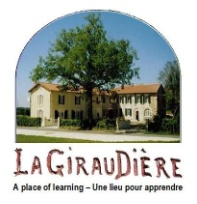La Leçon Francaise
La Giraudière volunteers come to Southwest France for many different reasons. However, most visitors will mention that at least one of their purposes is to learn more about the French language. Few would foolishly expect to become fluent in their three week stay, but even in such a short visit, the most basic beginner will pick up a wealth of knowledge about the language. Whether, it is improving your ear for the sound of French or adding vocabulary to what you already know, the weekly French lessons at La Giraudiere are a boon to the volunteers.
Precisely at ten o’clock Madame Lynn arrives from the village of Brossac. A cheerful woman, her perfect French belies the fact that she is really from London. She greets everyone with Bonjours and Comme ca vas and then proceeds to converse with everyone as if they are native speakers. Surprisingly, much of what she is saying is understandable by the volunteers. Of course, many words are lost but the gist of her dialogue breaks through the curtain of language barriers. Guessing that perhaps one or two people may be totally lost, she kindly peppers her conversation with English words to facilitate some basic understanding.
Madame asks us to join her in the living room where we gather around her as she invites us to sit down, Assisez -vous, sil vous plait. The hand motion towards the chair is a marvelous visual cue to her request. She jumps right into the lesson by passing out a rather sophisticated quiz about French history – all written in French, of course. This appears a bit daunting at first, as it tests not only our knowledge of the French language but of French history as well. its a coin toss as to which one we are most deficient in. The first question is a total washout Ou se trouve St. Malo? Many of us have the background to understand the question, Where do you find St. Malo. But no one knows its in Brittany or en Bretagne. However, the speed at which we decipher the question puts us at ease for the rest of the quiz. The next question proves we are more experienced with France than we realize. We are asked what is produced in Bordeaux. The word produit is an easy translation and as we have had many encounters with the pride of Bordeaux, we know the answer is vin. Real life experience is invaluable. By the last question we don’t really care which Louis built Versailles. We are just proud of the fact that we understood the question.
Next Madame takes us on an imaginary shopping trip to the village. She spreads word cards across the table with a few picture cards and asks us to categorize them. Some of the words are instantly recognizable – chemise is in the same group as jeans, patisserie with pain (we have already learned those words well on outings into the village; But cuir gives us pause and quincaillerie doesn’t look like anything recognizable. Amazingly the word cuir comes in handy the next day at the market when one of our group wants to buy a leather belt, une ceinture cuir. A quincaillerie is a hardware store. That can come in handy if you need to buy a drill (une perceuse.)
By the end of the lesson, everyone remarks how comfortable they have felt withe their exposure to the French language under the friendly guidance of Madame Lynn. No one expects to be holding lengthy conversations with the villagers at the next petanque game, but perhaps ordering a vin rouge or a biere peche wont be such a frightening task. Most amazing of all is that everyone is looking forward to next weeks lesson. Cest Marveilleuse, Madame!
La Leçon Française at La Giraudière
Post Written by Terrence Cremin USA while on his working holiday volunteering in France
For information on volunteering in France or A working holiday in France Don’t forget to join us on Twitter and Facebook!




